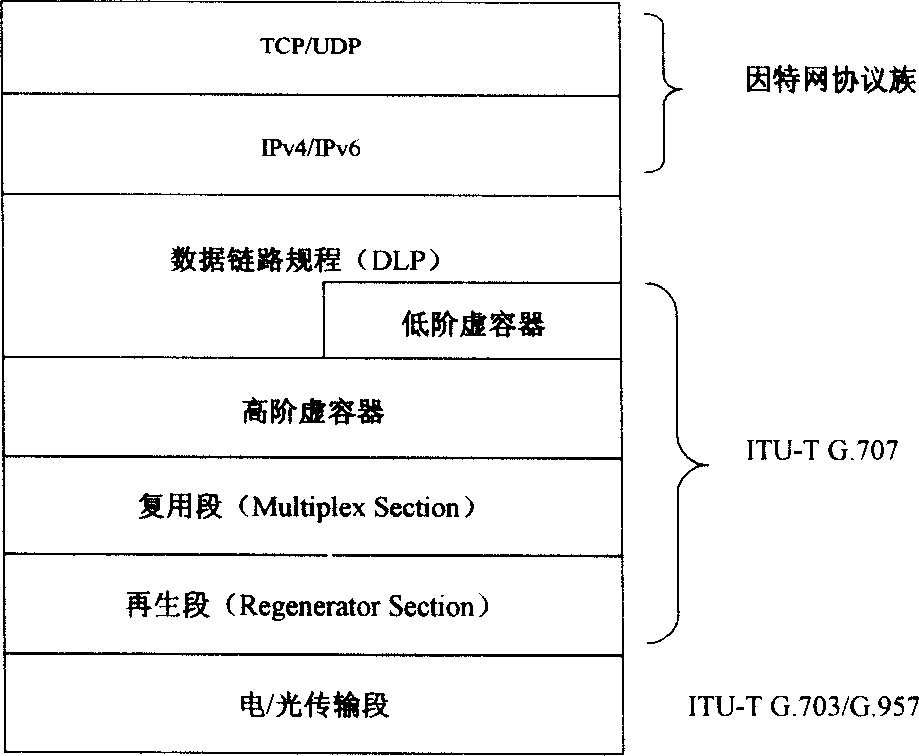Method for mutual communication between IPv4 network and IPv6 network
An ipv6 network and network technology, applied in electrical components, transmission systems, etc., can solve problems such as increasing processing levels, lack of traffic engineering capabilities, and inability to achieve IPv4 and IPv6 network interoperability
- Summary
- Abstract
- Description
- Claims
- Application Information
AI Technical Summary
Problems solved by technology
Method used
Image
Examples
Embodiment Construction
[0109] The idea proposed by the present invention is mainly used for comprehensive access equipment at the user end (access equipment that can access any one or several services in voice, data, and video services), various routers (including access switching routers, Edge access switching routers or aggregation switching routers, core or high-end switching routers), high / medium / low-end Ethernet switches based on packet switching, multi-service delivery platforms, and any interconnection and intercommunication equipment related to the Internet, from the perspective of network topology It can be used from access to aggregation to core network. Figure 20 is an implementation example of the present invention, in which the cloud-like part in the figure represents a physical transport network that supports the DLP protocol and adopts any transport technology, the solid line in the figure represents the link used to transmit IPv4 services, and the dotted line represents the business u...
PUM
 Login to View More
Login to View More Abstract
Description
Claims
Application Information
 Login to View More
Login to View More - R&D
- Intellectual Property
- Life Sciences
- Materials
- Tech Scout
- Unparalleled Data Quality
- Higher Quality Content
- 60% Fewer Hallucinations
Browse by: Latest US Patents, China's latest patents, Technical Efficacy Thesaurus, Application Domain, Technology Topic, Popular Technical Reports.
© 2025 PatSnap. All rights reserved.Legal|Privacy policy|Modern Slavery Act Transparency Statement|Sitemap|About US| Contact US: help@patsnap.com



